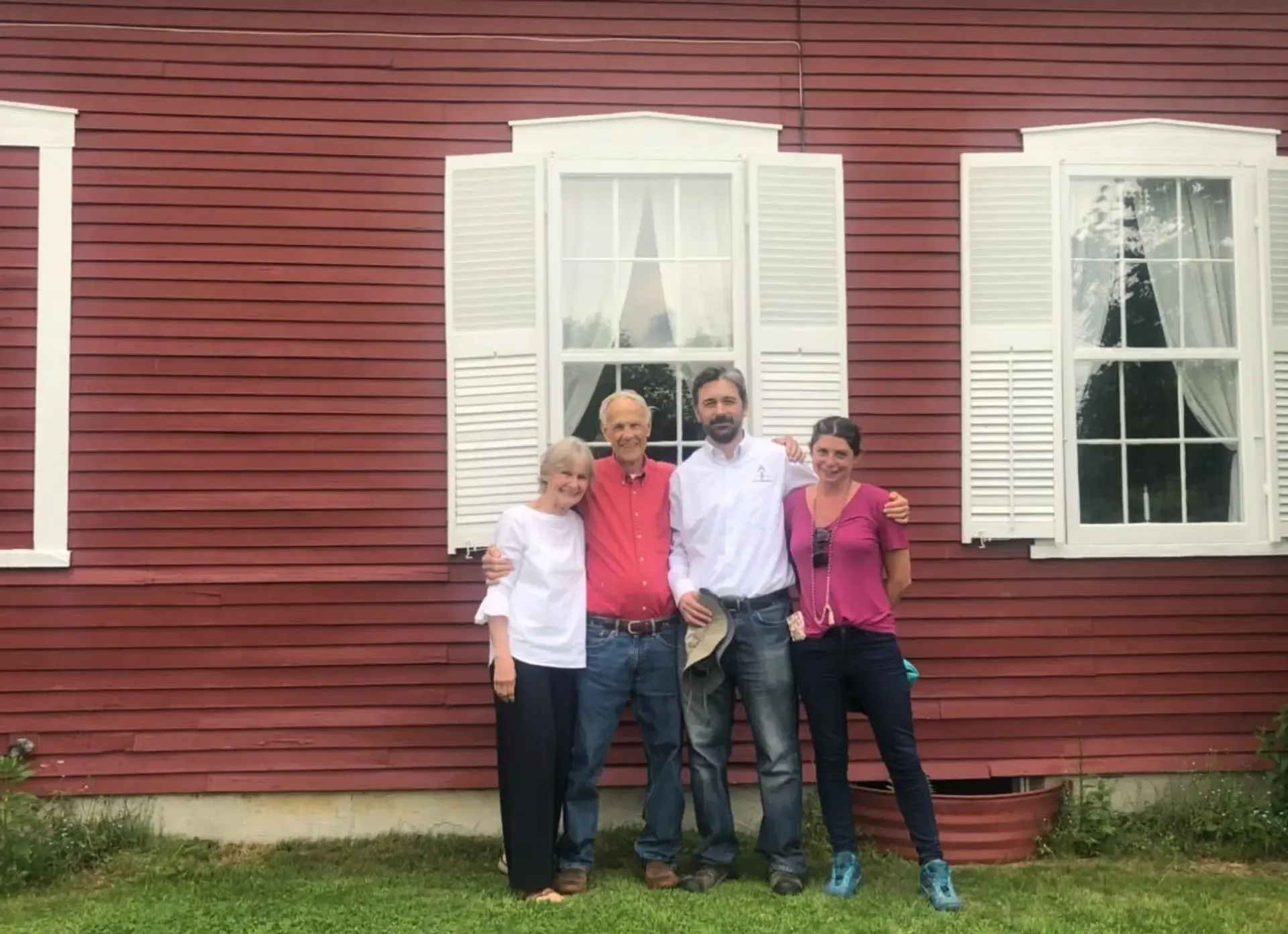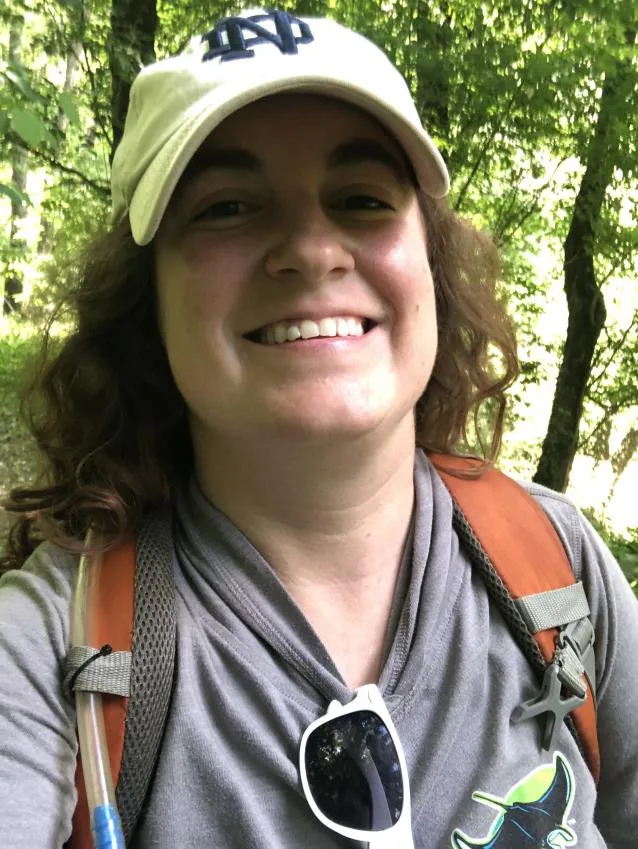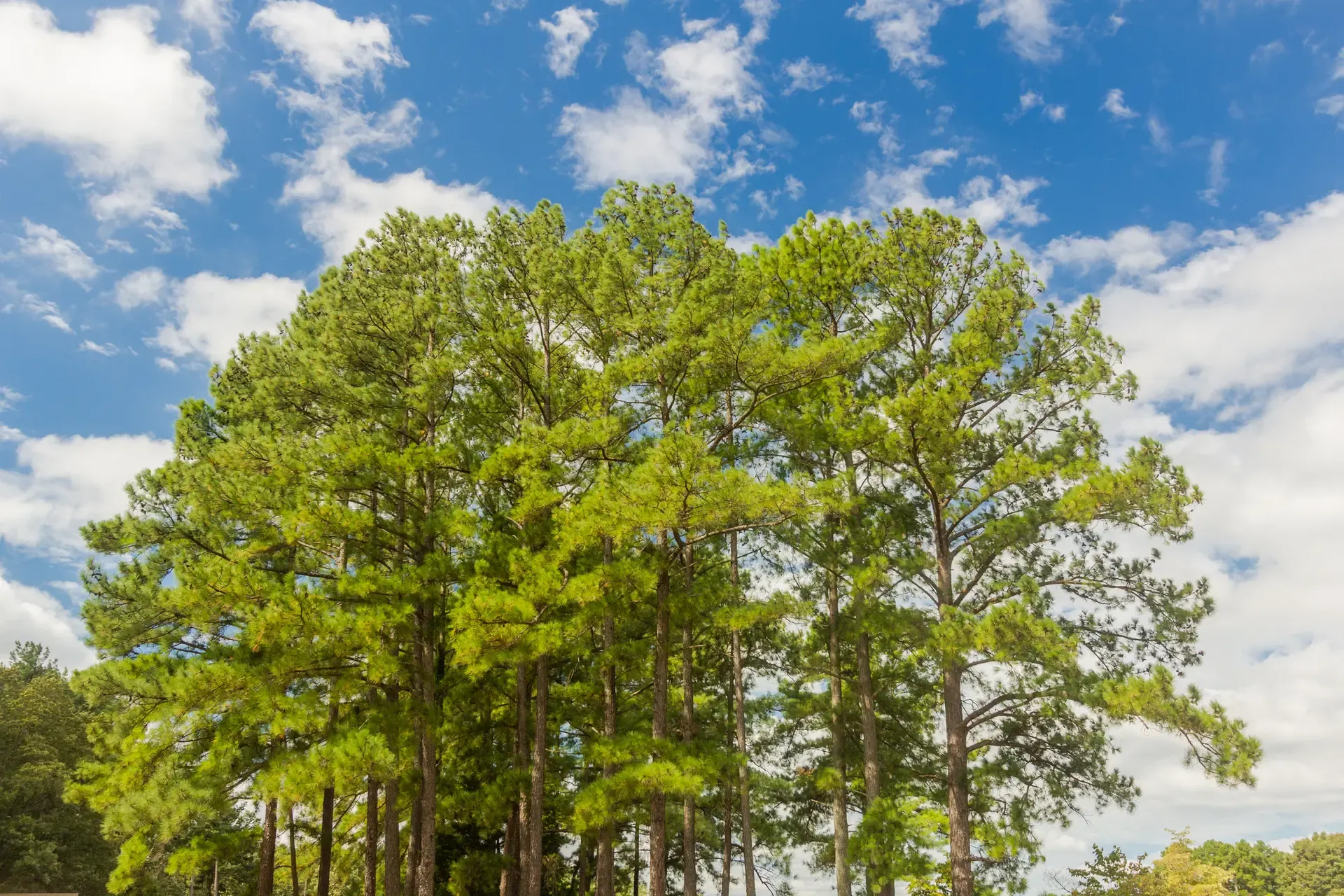Peter and Julie Parker: Good Stewardship Today Helps Secure Our Collective Future

Julie and Peter Parker at their property in Vermont with AFF staff in June 2019.
Longtime AFF members Peter and Julie Parker own two very different forest properties, but their approach to managing these woodlands is the same, based on practices they learned through the American Tree Farm System (ATFS). “We go back many, many years with ATFS,” said Peter. “To be a certified Tree Farmer, you have to reach a level of sustainable, well-managed forests for habitat, for carbon sequestration, for clean water and for the production of wood products for the world.”
During the first two decades of their 68-year marriage, the Parkers did not have a property where they could put these principles into practice. While they often spent their vacations on relatives’ woodlands, by 1980, “We were ready to have our own piece of land,” said Julie. Although they lived in California, they spent summers in New England and had family ties there, so were delighted when they found a 187-acre wooded farm in Vermont.
Peter went to high school there, and we met at Middlebury College, so it was a natural place to look for our own land. Vermont is in our blood.
“Peter went to high school there, and we met at Middlebury College, so it was a natural place to look for our own land. Vermont is in our blood,” said Julie.
Nine years later, with Peter’s sisters, they bought 2,500 acres of redwood forest in Mendocino County, California. To finance that purchase, the siblings sold the 3,000 acres of Mississippi forestland that their father had bought in the 1950s. The pines on the land had been clearcut for electric poles, so the price was only $20 an acre. Over the next 30 years, Peter’s father and his children were able to increase both the price and the sustainability of that land by working with the ATFS to grow the pines again by responsible management.
Because of their outstanding stewardship of their forests in Vermont and California, the Parkers have been honored as Tree Farmers of the Year in both states. Their success, and their continuing advocacy for forests while working with AFF, has inspired many other family forest owners to adopt better forest management practices.
Looking to the Future
In the late 1980s, Peter served on the AFF Board and as chair of the membership committee. As he was trying to recruit new people to become members of AFF, “I realized how tough it is to convince landowners that they need to manage their forests in a sustainable way,” he said. So the Parkers made donations to AFF, supporting outreach programs like Woods, Wildlife and Warblers. This program provided forest owners in four southern Vermont counties with the knowledge, tools, and resources to better care for their woods and the wildlife that live in them.
Peter also went out and talked to his neighbors about the importance of sustainable forest management. Although the responses weren’t positive at first, Peter’s persistence, and repeated visits, eventually had neighbors asking for his advice on managing their land.
“Half of the success of that program was the local community networking aspect, which the AFF could not have achieved without assistance from Peter and other landowners,” said Ema Johnson, Senior Manager of Philanthropy at AFF.
Our vision has included placing conservation easements on our two properties in California and Vermont, protecting both properties from development, and encouraging the preservation of water, habitat and carbon sequestration.
The Parkers, who both celebrated their 90th birthdays in 2022, also understand the importance of educating the next generations about the need to maintain and protect forestland. They have talked with their family, which now spans four generations, about their hopes for the future. “Our vision has included placing conservation easements on our two properties in California and Vermont, protecting both properties from development and encouraging the preservation of water, habitat, and carbon sequestration,” said Julie.
The Parkers have encouraged other family forest owners to do the same, but realize how complex succession planning can be. “Estate planning brings up the issue of how much more economically valuable forests are to housing development than to timber harvest. It is challenging to hold onto forests as forests. Even within our own family, we have had to listen and work to win people over on the greater vision, the terrific importance of climate change, and trying to hold onto forests rather than develop them,” said Julie.
Because of the Parkers’ careful land management, their three children and four grandchildren have had the opportunity to see how the land can bring economic benefits into the future. For example, with California no longer permitting any redwood harvesting on state land, the demand for the Parkers’ redwoods has grown exponentially. “With extremely careful stewardship, we’re growing more timber that we are cutting,” said Julie.
Supporting Carbon Programs
Over the years, in working with AFF staff members like Nate Truitt (now AFF vice president), the Parkers have come to trust and respect the organization’s leadership in promoting and protecting family forests. “I knew that my concerns were being heard and addressed by AFF staff, from the threat of land development to the lack of estate planning and generational land transfer,” said Julie. “I felt valued in what we had to offer and that we were on the same wavelength. We have the same goals.”
Because of that trust and their confidence in AFF, the Parkers were among the first donors in 2019 to support AFF’s Family Forest Carbon Project.
Identifying a stream of income for landowners and enabling poorly-managed land to flourish in the [Family Forest Carbon Program] is a plus for the environment.
“Identifying a stream of income for landowners and enabling poorly-managed land to flourish in the FFCP program is a plus for the environment,” said Peter. “Ownership can be maintained throughout generational change thanks to annual landowner payments. FFCP allows landowners access to previously unattainable markets and provides technical assistance with a sustained source of funding.”
Building Awareness
The Parkers are hopeful that the Family Forest Carbon Program will build a real community among forest owners and increase the awareness of how forests can benefit everyone. “People are so detached from the environment in cities that they don’t understand the value of working forests,” Peter said.
I realize that our efforts are tiny pieces of this puzzle, and we must get there on a national scale—your forest land, whether you’re in California, Mississippi or Arkansas, is valuable.
Beyond that, they see the need for increased local efforts to protect forests, which will have long-term implications on both national and global levels. “I realize that our efforts are tiny pieces of this puzzle, and we must get there on a national scale—your forest land, whether you’re in California, Mississippi, or Arkansas, is valuable.” said Peter. “Thinning trees prevents overcrowding, wildfires, and insect infestation.”
The Parkers agree that the time for action is now, and it’s urgent. “We are in a serious environmental situation. The most impactful way to get carbon out of the atmosphere is to have trees sequester it,” said Peter. The couple recognizes that there are many environmental challenges that the country needs to address to save family forests as we know them.
The political situation has made this even more difficult. “Every country right now is divided, and most of us question whether our world is going to get through this,” said Julie. One reason that they have donated to the FFCP is that AFF is not involved in those controversies, but is respected by parties on all sides. “In the long run, that gets us farther,” said Julie.
Peter and Julie are the embodiment of great land stewardship. Not only do they want to do what’s best on their own land and help connect their neighbors, but they want to make sure the land—and our world—is in good hands for future generations.
People like the Parkers are crucial to AFF’s effort, said Nathan Truitt, AFF Vice President: “Peter and Julie are the embodiment of great land stewardship. Not only do they want to do what’s best on their own land and help connect their neighbors, but they want to make sure the land—and our world—is in good hands for future generations.
“From the moment I met them, I have just been so grateful for all I have learned from them and for all they have done for their family, their neighbors in California and Vermont and for all who are fortunate enough to know them,” he added.
This story, written by Mary Lou Jay, will be published in the winter issue of Woodland Magazine, the quarterly publication of the American Forest Foundation.
Related Articles

July 1, 2025
Forester Spotlight: Sarah Cawood
We’re excited to highlight Sarah Cawood, a dedicated forester with the Family Forest Carbon Program (FFCP) who brings enthusiasm, experience, and a strong commitment to conservation to her work.

June 3, 2025
Why Wildlife Loves Loblolly—And How These Pines Can Benefit Your Land
A quiet stretch of pine trees can offer more than just scenery—it can provide vital habitat for wildlife across every season. Loblolly pine, the most common native tree species in the Southeast, plays a particularly important role in creating habitat for a wide variety of game and non-game species, from wild turkeys and rabbits to songbirds and squirrels.

May 28, 2025
New Report Details Innovative Approach to Permanence for Natural Climate Solutions
The American Forest Foundation released today “A Trust for Permanence: Enabling a New Generation of Permanent Nature-Based Credits in the Voluntary Carbon Market,” a new concept paper that details an innovative approach to ensuring the quality and integrity of credits produced through natural climate solutions (NCS).